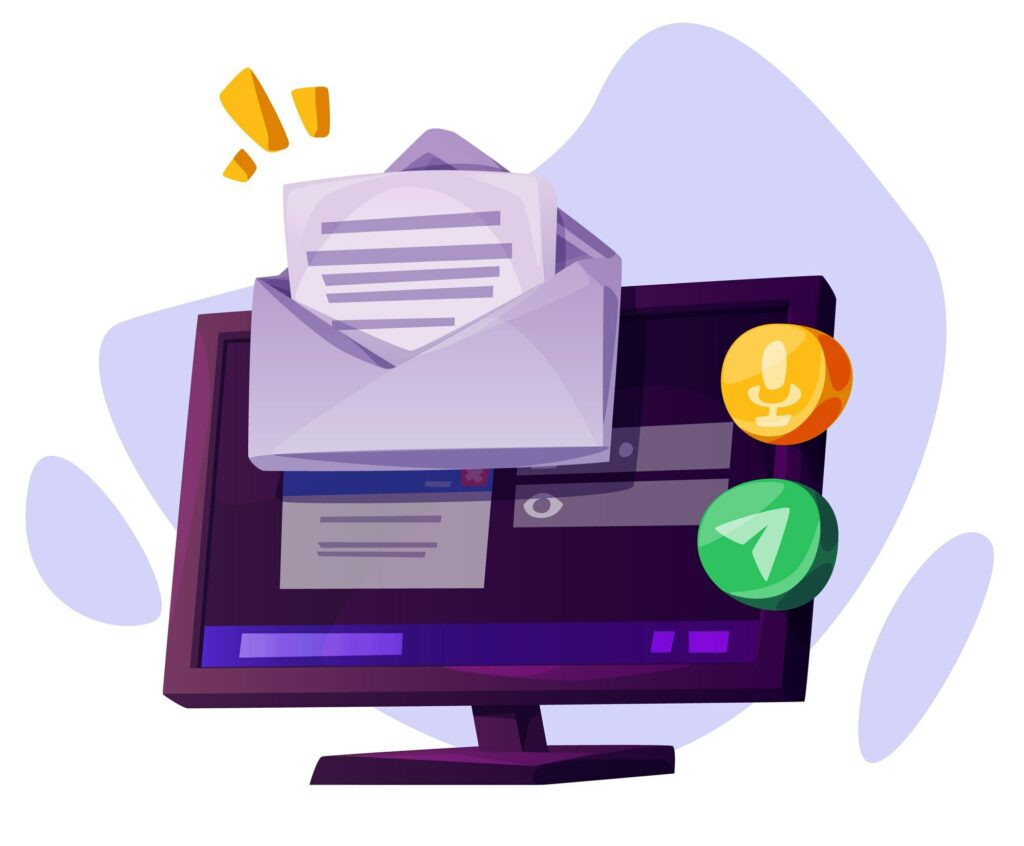Cold emailing is a potent tool for businesses to reach potential clients. When done correctly, it can effectively complement broader sales and marketing strategies.
It is an unsolicited email sent to a potential customer who has no prior relationship with the sender. Unlike spam, which is often irrelevant and mass-distributed, cold emails are targeted and personalized to resonate with specific recipients. This personalization and targeting make cold emailing a viable tactic within a comprehensive marketing strategy.

Aligning Cold Emails with Your Sales Funnel
Integrating cold email softwares into your sales funnel is crucial for nurturing leads effectively. Here’s how you can align cold emails at each stage of the funnel:
1. Top of the Funnel (TOFU): Awareness
At this stage, the goal is to introduce your brand and generate interest. Cold emails should focus on identifying pain points and presenting your company as a potential solution.
2. Middle of the Funnel (MOFU): Consideration
At this stage, your cold emails should provide more detailed information about your offerings and how they stand out from the competition. This is also a good time to share case studies, testimonials, and other social proof.
3. Bottom of the Funnel (BOFU): Decision
In the decision stage, the focus is on closing the deal. Cold emails should include special offers, detailed proposals, or invitations to discuss terms and finalize agreements.
Personalization and Targeting: The Heart of Effective Cold Emailing
Personalization is crucial in cold emailing. Generic emails are often ignored or marked as spam. To personalize effectively, use data to understand your prospects and tailor your messages accordingly. Here are some tips:
- Use the recipient’s name: Always address the recipient by their name.
- Reference their company: Mention the company name and specific industry challenges.
- Highlight common connections: If you share a mutual connection or were referred by someone, mention it.
- Technical Tip: Use cold email tools that offer personalization features such as merge tags for names, companies, and other specific details.
Crafting Compelling Subject Lines
The subject line is your first impression. It determines whether the recipient will open your email. Here are some tips for creating compelling subject lines:
- Keep it short and sweet: Aim for 5-7 words.
- Spark curiosity: Pique the recipient’s interest without giving too much away.
- Highlight benefits: Clearly state what’s in it for the recipient.
Example Subject Lines:
- “Boost Your Sales by 30% with [Your Company]”
- “Quick Question About [Recipient’s Company]”
- “Struggling with [Pain Point]? We Can Help!”
Building Credibility and Trust
Credibility and trust are paramount in cold emailing. Here’s how to establish them:
- Professional email address: Use a company domain rather than a generic email provider.
- Social proof: Mention notable clients, include testimonials, or share case studies.
- Clear and concise messaging: Avoid jargon and ensure your message is easy to understand.
Technical Aspects of Cold Emailing
To ensure your cold emails are delivered and read, pay attention to the following technical aspects:
1. Email Deliverability
Deliverability is the rate at which your emails reach recipients’ inboxes rather than their spam folders. Maintain a good sender reputation by regularly cleaning your email list and avoiding spammy practices. Use DKIM, SPF, and DMARC protocols to authenticate your emails. Avoid spam trigger words and ensure your emails have a good text-to-image ratio.
2. Tracking and Analytics
Track the performance of your cold email campaigns to understand what works and what doesn’t. Key metrics include:
- Open rates: The percentage of recipients who open your email.
- Click-through rates (CTR): The percentage of recipients who click on links within your email.
- Response rates: The percentage of recipients who reply to your email.
- Use tools like Google Analytics, HubSpot, or Mailchimp to track these metrics and gain insights into your campaign performance.
3. A/B Testing
A/B testing involves sending two variations of an email to see which performs better. Elements to test include:
- Subject lines
- Email content
- Call-to-action (CTA)
Send two versions of an email with different subject lines to see which one has a higher open rate. Analyze the results and use the better-performing subject line for future emails.
Integrating Cold Email with Other Marketing Channels
For a seamless marketing strategy, integrate cold email with other channels:
1. Content Marketing
Use insights from cold emails to inform your content strategy. If certain pain points or questions keep arising, create blog posts, whitepapers, or videos addressing these issues.
2. Social Media
Leverage social media to warm up cold leads. Connect with prospects on LinkedIn before sending a cold email, and share relevant content that might interest them.
3. CRM Integration
Integrate your cold email campaigns with your Customer Relationship Management (CRM) system. This ensures all interactions with prospects are recorded, providing a comprehensive view of your sales pipeline.
Technical Tip: Tools like Salesforce, HubSpot, and Zoho CRM offer integration features that allow you to sync email campaigns with your CRM, ensuring seamless data flow and better lead management.
Measuring Success and Iterating
Continuously measure the success of your cold email campaigns and iterate based on feedback and data. Key steps include:
- Analyzing metrics: Regularly review open rates, CTR, and response rates.
- Gathering feedback: Ask recipients for feedback on the relevance and value of your emails.
Iterating: Use insights from your analysis and feedback to refine your email content, targeting, and strategy.
Conclusion
Integrating cold email into your overall sales and marketing strategy can drive significant results when done correctly. By aligning cold emails with your sales funnel, personalizing messages, focusing on deliverability and tracking, and integrating with other marketing channels, you can create a seamless and effective strategy. Continuous measurement and iteration will ensure your cold email campaigns remain relevant and impactful, ultimately leading to higher engagement and conversions.
